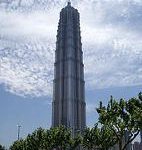As I was being driven through Tel Aviv from my hotel to a conference center a few years ago, I could not help but note the overwhelming presence of cars and parking lots. Tel Aviv, expanding from a small settlement a half-century ago to a city of some 3 million today, evolved during the automobile era. It occurred to me that the ratio of parks to parking lots may be the best single indicator of the livability of a city—an indication of whether the city is designed for people or for cars.
The world’s cities are in trouble. In Mexico City, Tehran, Bangkok, Shanghai, and hundreds of other cities, the quality of daily life is deteriorating. Breathing the air in some cities is equivalent to smoking two packs of cigarettes per day. In the United States, the number of hours commuters spend going nowhere sitting in traffic-congested streets and highways climbs higher each year, raising frustration levels.
In response to these conditions, we are seeing the emergence of a new urbanism. One of the most remarkable modern urban transformations has occurred in Bogotá, Colombia, where Enrique Peñalosa served as Mayor for three years, beginning in 1998. When he took office he did not ask how life could be improved for the 30 percent who owned cars; he wanted to know what could be done for the 70 percent—the majority—who did not own cars.
Peñalosa realized that a city that is a pleasant environment for children and the elderly would work for everyone. In just a few years, he transformed the quality of urban life with his vision of a city designed for people. Under his leadership, the city banned the parking of cars on sidewalks, created or renovated 1,200 parks, introduced a highly successful bus-based rapid transit system, built hundreds of kilometres of bicycle paths and pedestrian streets, reduced rush hour traffic by 40 percent, planted 100,000 trees, and involved local citizens directly in the improvement of their neighbourhoods. In doing this, he created a sense of civic pride among the city’s 8 million residents, making the streets of Bogotá in this strife-torn country safer than those in Washington, D.C.
Enrique Peñalosa observes that “high quality public pedestrian space in general and parks in particular are evidence of a true democracy at work.” He further observes: “Parks and public space are also important to a democratic society because they are the only places where people meet as equals.…In a city, parks are as essential to the physical and emotional health of a city as the water supply.” He notes this is not obvious from most city budgets, where parks are deemed a luxury. By contrast, “roads, the public space for cars, receive infinitely more resources and less budget cuts than parks, the public space for children. Why,” he asks, “are the public spaces for cars deemed more important than the public spaces for children?”
In espousing this new urban philosophy, Peñalosa is not alone. The reform he initiated in Bogotá is being carried on by his successor, Antanas Mockus. Now government planners everywhere are experimenting, seeking ways to design cities for people not cars. Cars promise mobility, and they provide it in a largely rural setting. But in an urbanizing world there is an inherent conflict between the automobile and the city. After a point, as their numbers multiply, automobiles provide not mobility but immobility.
Some cities in industrial and developing countries alike are dramatically increasing urban mobility by moving away from the car. Jaime Lerner, the former mayor of Curitiba, Brazil, was one of the first to design and adopt an alternative transportation system, one that does not mimic those in the West but that is inexpensive and commuter-friendly. Since 1974 Curitiba’s transportation system has been totally restructured. Although one third of the people own cars, these play a minor role in urban transport. Busing, biking, and walking totally dominate, with two thirds of all trips in the city by bus. The city’s population has doubled since 1974, but its car traffic has declined by a remarkable 30 percent.
Aside from the growth of population itself, urbanisation is the dominant demographic trend of our time. In 1900, 150 million people lived in cities. By 2000, it was 2.9 billion people, a 19-fold increase. By 2007 more than half of us will live in cities—making us, for the first time, an urban species.
In 1900 there were only a handful of cities with a million people. Today 408 cities have at least that many inhabitants. And there are 20 megacities with 10 million or more residents. Tokyo’s population of 35 million exceeds that of Canada. Mexico City’s population of 19 million is nearly equal to that of Australia. New York, São Paulo, Mumbai (formerly Bombay), Delhi, Calcutta, Buenos Aires, and Shanghai follow close behind.
The Author: Lester R. Brown is an internationally renowned environmentalist and author of numerous books, including the recently-released “Plan B 2.0: Rescuing a Planet Under Stress and a Civilization in Trouble,” in which the above extract first appears. It is reproduced here with the permission of the Earth Policy Institute where Lester remains as the Founding President.
Homepage photo: Cycle lanes in Bogota, photo by Adriana Henriquez


